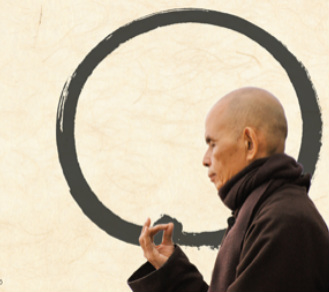Thich Nhat Hanh Talks About Reincarnation

At first, we might think of reincarnation as a soul entering a body. The body is seen as impermanent and the soul as permanent, and when we get rid of one body, we re-enter another. You might be surprised to know that people in Buddhist Asia are not fond of reincarnation. They want the circle of birth and death to end because they know it represents suffering without end.
The Buddha taught that a so-called "person" is really just five elements (skandhas) that come together for a limited period of time: our body, feelings, perceptions, mental states and consciousness. These five elements are, in fact, changing all the time. Not a single element remains the same for two consecutive moments.
Not only is our body impermanent, but our so-called soul is also impermanent. It, too, is comprised only of elements like feelings, perceptions, mental states, and consciousness. When the idea of an immortal soul is replaced, our understanding of reincarnation gets closer to the truth.
But if we observe the things around us, we find that nothing comes from nothing. Before its so-called birth, the flower already existed in other forms -- clouds, sunshine, seeds, soil, and many other elements. Rather than birth and rebirth, it is more accurate to say "manifestation" (vijñapti) and "remanifestation." The so-called birthday of the flower is really a day of its remanifestation. It has already been here in other forms, and now it has made an effort to remanifest. Manifestation means its constituents have always been here in some form, and now, since conditions are sufficient, it is capable of manifesting itself as a flower. When things have manifested, we commonly say they are born, but in fact, they are not. When conditions are no longer sufficient and the flower ceases to manifest, we say the flower has died, but that is not correct either. Its constituents have merely transformed themselves into other elements, like compost and soil.
The Buddha taught that a so-called "person" is really just five elements (skandhas) that come together for a limited period of time: our body, feelings, perceptions, mental states and consciousness. These five elements are, in fact, changing all the time. Not a single element remains the same for two consecutive moments.
Not only is our body impermanent, but our so-called soul is also impermanent. It, too, is comprised only of elements like feelings, perceptions, mental states, and consciousness. When the idea of an immortal soul is replaced, our understanding of reincarnation gets closer to the truth.
But if we observe the things around us, we find that nothing comes from nothing. Before its so-called birth, the flower already existed in other forms -- clouds, sunshine, seeds, soil, and many other elements. Rather than birth and rebirth, it is more accurate to say "manifestation" (vijñapti) and "remanifestation." The so-called birthday of the flower is really a day of its remanifestation. It has already been here in other forms, and now it has made an effort to remanifest. Manifestation means its constituents have always been here in some form, and now, since conditions are sufficient, it is capable of manifesting itself as a flower. When things have manifested, we commonly say they are born, but in fact, they are not. When conditions are no longer sufficient and the flower ceases to manifest, we say the flower has died, but that is not correct either. Its constituents have merely transformed themselves into other elements, like compost and soil.